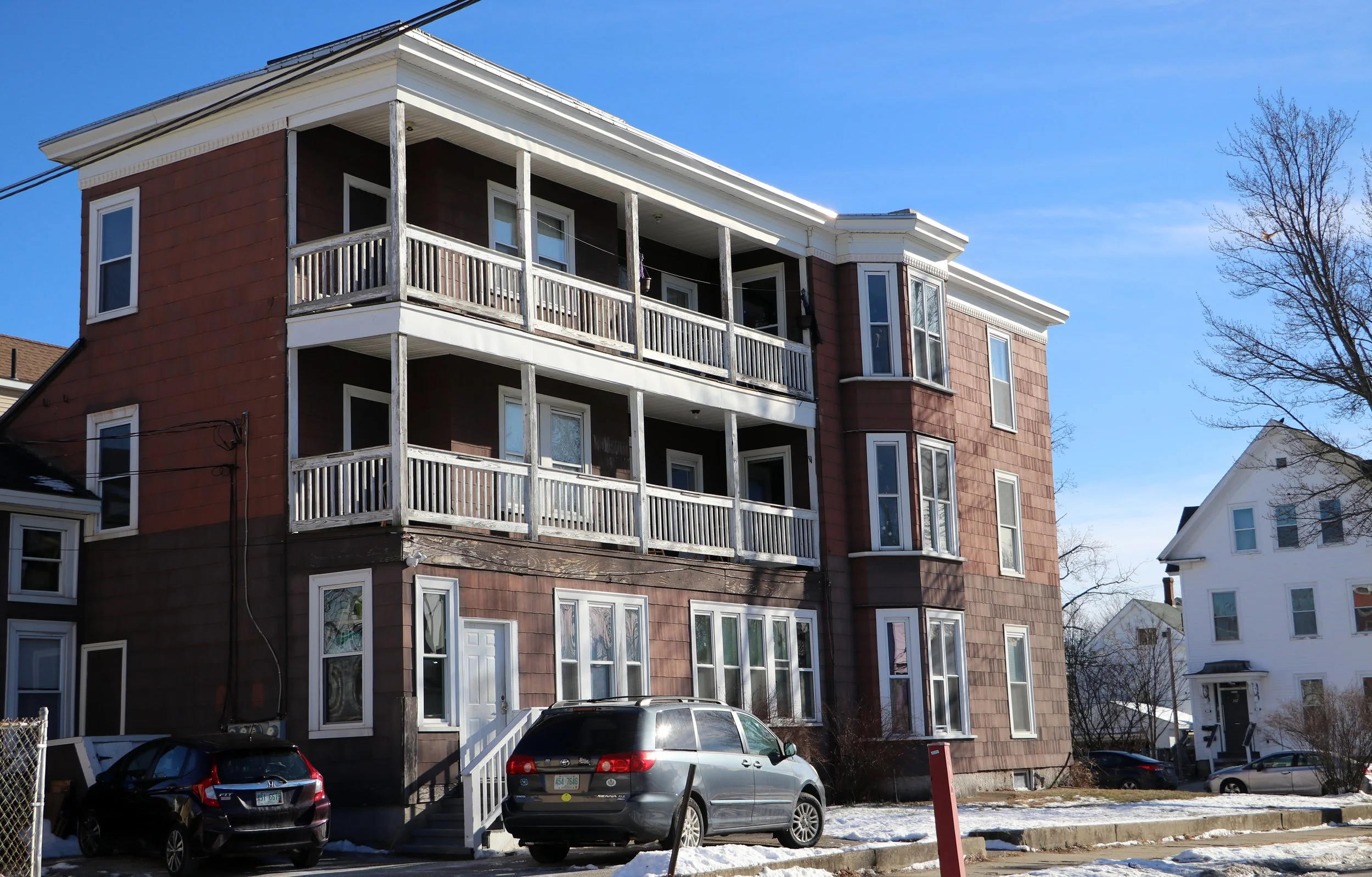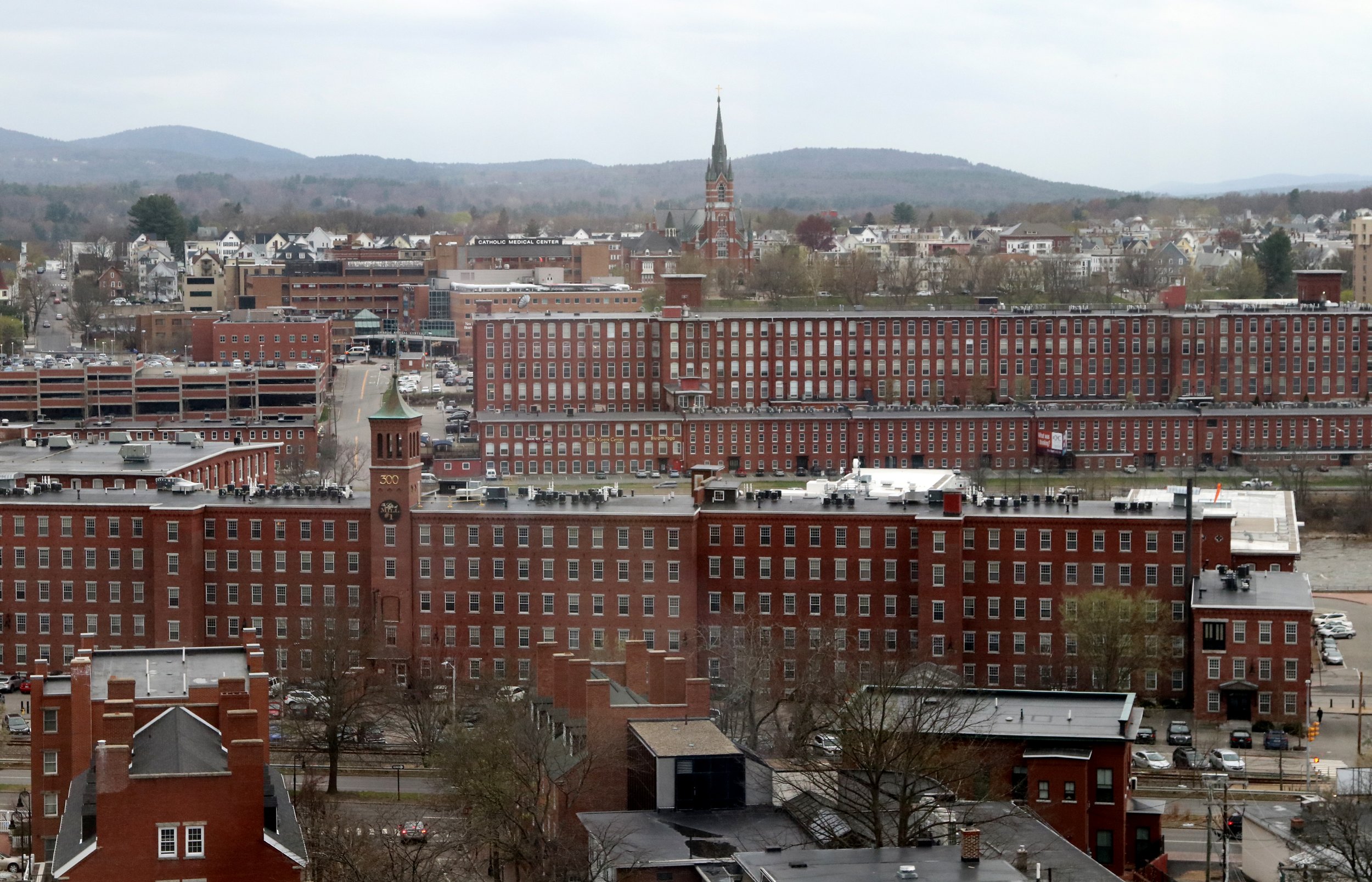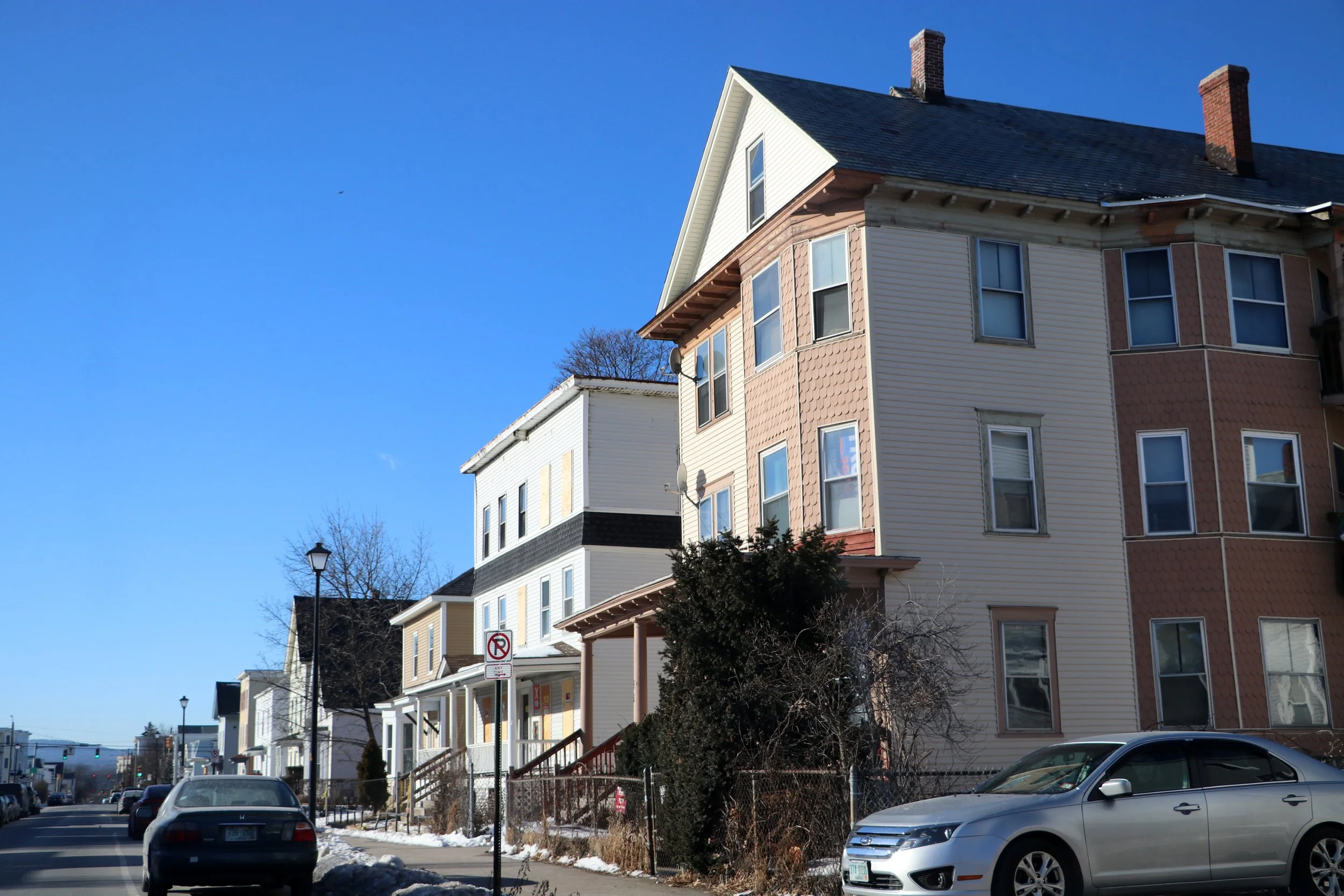The persistence of center city’s crime issues is easy to spot in the last decade of crime data from the Manchester Police Department (MPD). According to the collaborative’s analysis of calls for police service between 2006 and 2020, the number of crimes reported per resident was significantly higher in center city than anywhere else in Manchester (see map). Compared to the suburbs in northwestern and northeastern Manchester, parts of center city reported roughly five times as many calls for service.
Invisible Walls: Discriminatory home lending persists in New Hampshire
Wellington cites many factors as contributing to the concentration of the state’s minority populations in these ethnic enclaves. Marking certain neighborhoods as undesirable for mortgage loans, a practice known as redlining, was banned in 1965, but its legacy remains a factor in Manchester. The phenomenon of “white flight” from the inner city has been well-documented. Zoning that restricts multifamily housing is widespread throughout the state.
Invisible Walls: A century of exclusionary zoning has helped divide Manchester by income and race
A maze of invisible walls has divided Manchester since the 1920s, dictating what can be built where and, indirectly, where the city’s poorest residents can live. These walls, created by land use zoning laws, have helped segregate the city by income and race. Experts say that even though this kind of zoning is common, it is slowing efforts to fix some of the city’s most complex issues, including the housing shortage, persistent crime hotspots, and economic and racial segregation.
Invisible Walls: The Amoskeag Company legacy
Company town, planned city, manufacturing utopia — these are some of the buzzwords that come up when reading about Manchester under the Amoskeag Manufacturing Company, the mammoth textile producer that reigned over Manchester until the company’s collapse in 1935. That lofty language reflects the company founders’ sky-high aspirations — driven, as one historian has written, by a desire to improve upon “the grimy industrial cities of Europe, where a permanent underclass toiled in the mills” — and hints at the reach of the company’s power.
Invisible Walls: The shackles of zoning
Zoning, in the broadest sense, is the set of laws that dictates how land can be used, including what can be built where. The local zoning or planning board in most communities records these laws in maps and texts, the latter of which can be quite unwieldy. (New York City’s ordinance is a 3,400-page behemoth that comes with its own 200-page summary, making Manchester’s 165-page ordinance look relatively slim.)
Despite the heft, the questions that these documents try to answer are surprisingly simple.
The Role of Redlining
As described by Richard Rothstein’s best-selling book, “The Color of Law,” the mechanism behind redlining was simple. In 1933, to rescue homes that were about to default, the newly created, federally sponsored Home Owners’ Loan Corp. (HOLC) began offering beleaguered homeowners a new kind of loan, the amortized mortgage.





